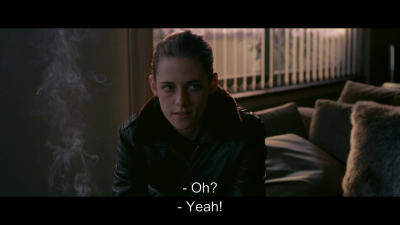A Meditation on the Connection Between Universals and Universalisms
Universalisms are discourses that posit ‘universal’ categories such as ‘humanity’ or ‘Man’ and then elaborate universalizing concepts such as ‘equality’ or ‘freedom’ on the basis of these categories. In other words, universalisms are discourses that are normative and that base their norms on a presumption of human universality.[1]
By contrast, universals (treated extensively on this site) are evidence of a common humanity. In their demonstration of cross-cultural and trans-historical patterns, they support the idea that all humans have a common denominator of biology or culture that ties them together as humans.
While on the surface of it, universalisms and universals seem to be opposed to one another–with one suggesting that humanity is an idea and the other that humanity is an objective fact–I suggest they are in fact related to one another. This assertion becomes clear when one considers why and how recognizable or comparative concepts of freedom or dignity are found in more than one culture. I explore this question in my recent book Literatures of Liberation: Non-European Universalisms and Democratic Progress, which argues that Enlightenment concepts of ‘rationality,’ ‘freedom,’ ‘ethical exchange’ and ‘rule by the people’ are only one consolidation of universalizing impulses. The book claims that there exist comparable conceptual networks, which I call contextual universalisms, elsewhere in the world. Ngũgĩ wa Thiong’o makes a similar assertion when he describes particularist universalism, or the insistence that universals appear only in particular forms in particular cultures so that the universal and particular do not exist in a binary opposition to one another. As Patrick Colm Hogan puts it, such a perspective suggests that affirming a universal should never be a matter of denying or devaluing cultural particularity (see ‘What are Literary Universals?’).
In order to engage this point more clearly, we must first understand what is meant by a conceptual network. The terms ‘conceptual network’ and ‘concept’ are used here in a manner that is derived from the insights of research in cognition, which largely agrees that concepts are mental entities, or ways of thinking that are internal representations within the human mind —but which are also simultaneously cultural and shared. ‘Freedom’ as well as other notions such as ‘rational social organization’ and ‘rule by the people’ are simultaneously cultural and individual cognitive concepts that Peter de Bolla would argue provide commonly “identifiable labels to particular routes for thinking such and such, and for getting from one thought to another” (4). These labels activate and support cognitive processing and enable us to sense that we have arrived at understanding. They provide maps or blueprints for enabling comprehension of large items of cognition, sitting, as Peter de Bolla notes, in the background of mental processing. Moreover, these concepts set in motion complex ways of thinking because their coherence is established by the tension that connects them in a network with other concepts. The concept ‘freedom,’ for example, operates in the cognitive background when we encounter other related concepts such as ‘democracy’ and ‘equality.’ Thus, a concept contains both an internal structure as well as external connections to associated yet different concepts within a contextually and historically situated network. Taken together this conceptual network forms a concept’s architecture.[2]
Once we begin to think of universalisms as conceptual networks rather than bounded terms tied to a particular geography and language, we are able to see the terms ‘freedom’ ‘rationality’ etc. as placeholders for conceptual networks that include associated yet unique concepts in non-European epistemes.
For instance, the conceptual network pertaining to the universalism ‘rule by the people’ in antiapartheid South Africa included the Enlightenment concept of majoritarian popular sovereignty, the Marxist concept of the self-rule of the working class, as well as a Bantu contextual universalism of self-rule based on principles of “a chief is a chief through other people.” And all these concepts played a role in achieving the post-apartheid transition to democracy in South Africa through literary forms and structures of thought that enacted universalism in different yet related ways.
Similarly, the conceptual network pertaining to ‘rational social organization’ in India includes the Enlightenment concept of empirical and pragmatist rationality, a post-Enlightenment Marxist-derived socialism, as well as the Kabirian bhakti contextual universalism of rationality as a program of ethical and equitable action that expresses the divinity within.
And the postcolonial conceptual network pertaining to ‘freedom’ in India includes the hegemonic neoliberal ideal of individualism and self-development but also the post-Enlightenment notion of individual freedom and the rasa contextual universalism that truly free actions are shaped by the capacity to feel the affects of others.[3]
So how do these discourses that claim a common humanity (universalisms) actually work with–and as–evidence of a common humanity (universals)? By themselves, the existence of these comparative contextual universalisms does not function as descriptive evidence of ‘universally true’ and consistent qualities. These universalisms are not universals–proof of a human that is necessarily realized in all contexts, or a suggestion that the spiritual freedom of mukti is the same as the ‘individual freedom’ of the Enlightenment. Yet, having said that, investigating contextual universalisms is to recognize the ways in which certain material contexts may activate comparable cognitive capacities that exist as potentials in all human beings but that were previously latent. It is to say in other words that all humans have the capacity to develop concepts of freedom, dignity, or rationality but that certain contexts and conditions make their manifestation more likely. As Patrick Colm Hogan puts it, universals are “always the product of complex interactions among biology, the physical environment, childhood development, group dynamics etc.”[4] Such a claim means that the context within which a concept is manifested and the concept itself are inseparable from each other.
Future Research
We should examine contextual universalisms such as the ones I have highlighted, then, as indicators of discourses that have the potential to be universals – to exist everywhere – under the right conditions. Our democratic goal would be to study how and when these discourses have manifested themselves historically and maximize the conditions under which these concepts can be perpetuated. It is in this way that contextual universalisms could help shift emphasis from the hegemonic instrumentalization of Enlightenment universalisms and the postcolonial dismissal of universalisms overall.
Works Cited
de Bolla, Peter. The Architecture of Concepts: The Historical Formation of Human Rights. Fordham: Fordham University Press, 2013.
Mangharam, Mukti Lakhi. Literatures of Liberation: Non European Universalisms and Democratic Progress. Ohio: Ohio State University Press, 2017.
Ngũgĩ wa Thiong’o. Moving the Centre: The Struggle for Cultural Freedoms. London: James Curry, 1993.
Notes
[1] I will be using double quotation marks for quoting others and single quotation marks for all other purposes (e.g., drawing attention to a particular term).
[2] De Bolla 38.
[3] Rasa is a Sanskritic aesthetic device. The word refers to an aesthetic taste or mood experienced by an audience after witnessing the portrayal of emotional components, or bhava, onstage. It is the transferring of emotions or moods evoked to the audience through empathic witnessing and listening.
[4] The term ‘statistical universal,’ which describes the recurrence of a cultural pattern or concept with a cross-cultural frequency that is otherwise statistically unlikely, suggests a similar relationship between particular contexts and the kinds of concepts they encourage (see Patrick Colm Hogan, ‘What are Literary Universals?’).



